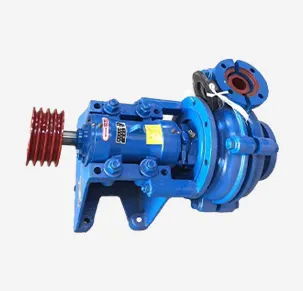Tagalog
- Afrikaans
- Albanian
- Amharic
- Arabic
- Armenian
- Azerbaijani
- Basque
- Belarusian
- Bengali
- Bosnian
- Bulgarian
- Catalan
- Cebuano
- Corsican
- Croatian
- Czech
- Danish
- Dutch
- English
- Esperanto
- Estonian
- Finnish
- French
- Frisian
- Galician
- Georgian
- German
- Greek
- Gujarati
- Haitian Creole
- hausa
- hawaiian
- Hebrew
- Hindi
- Miao
- Hungarian
- Icelandic
- igbo
- Indonesian
- irish
- Italian
- Japanese
- Javanese
- Kannada
- kazakh
- Khmer
- Rwandese
- Korean
- Kurdish
- Kyrgyz
- Lao
- Latin
- Latvian
- Lithuanian
- Luxembourgish
- Macedonian
- Malgashi
- Malay
- Malayalam
- Maltese
- Maori
- Marathi
- Mongolian
- Myanmar
- Nepali
- Norwegian
- Norwegian
- Occitan
- Pashto
- Persian
- Polish
- Portuguese
- Punjabi
- Romanian
- Russian
- Samoan
- Scottish Gaelic
- Serbian
- Sesotho
- Shona
- Sindhi
- Sinhala
- Slovak
- Slovenian
- Somali
- Spanish
- Sundanese
- Swahili
- Swedish
- Tagalog
- Tajik
- Tamil
- Tatar
- Telugu
- Thai
- Turkish
- Turkmen
- Ukrainian
- Urdu
- Uighur
- Uzbek
- Vietnamese
- Welsh
- Bantu
- Yiddish
- Yoruba
- Zulu
Telephone: +86 13120555503
Email: frank@cypump.com
Oct . 10, 2024 11:24 Back to list
slurry pump material
Understanding Slurry Pump Materials A Key to Efficiency and Durability
Slurry pumps play a crucial role in many industrial applications, particularly in the mining, construction, and wastewater management sectors. Their primary function is to transport a mixture of solids and liquids, known as slurry, from one point to another. Given the challenging nature of this job, the selection of appropriate materials for slurry pumps is vital to ensure efficiency, durability, and cost-effectiveness.
Nature of Slurries
A slurry can consist of finely divided solids suspended in a liquid, and the characteristics of these mixtures can vary widely. They can be abrasive, corrosive, or contain high solid concentrations, depending on the application. Consequently, the materials used to construct slurry pumps must withstand these harsh conditions without compromising their performance.
Common Materials Used in Slurry Pumps
1. Cast Iron Cast iron is a popular choice for slurry pump construction because of its excellent wear resistance and ability to handle moderately abrasive slurries. It is cost-effective and has good tensile strength; however, it may not be suitable for highly abrasive slurries or those that contain corrosive chemicals.
2. High Chromium Alloys For applications involving highly abrasive materials, high chromium alloys offer superior wear resistance. These materials can withstand the erosive processes that occur when transporting hard particles, making them ideal for mining and mineral processing environments.
slurry pump material

3. Rubber Linings In many cases, slurry pumps are lined with rubber to enhance their resistance to corrosion and abrasion. Rubber-lined pumps are particularly effective in pumping corrosive materials as the rubber acts as a barrier. Furthermore, the flexibility of rubber allows for better wear distribution over time, which reduces the frequency of pump maintenance.
4. Stainless Steel When dealing with corrosive slurries, stainless steel is often the material of choice. Its inherent corrosion resistance makes it suitable for chemicals and environments that would degrade other materials quickly. However, stainless steel is generally not as abrasion-resistant as other materials, which can limit its application in heavily abrasive situations.
5. Composite Materials Advanced composite materials combine the strengths of various substances—offering both erosion resistance and reduced weight. These materials can be engineered to meet specific application requirements, making them a versatile option for modern slurry pumps.
Choosing the Right Material
Selecting the appropriate material for a slurry pump is critical to optimizing its lifespan and reducing operational costs. Factors that must be considered include the type and concentration of solids in the slurry, the pH level of the liquid, temperature, and the flow rate. By assessing these variables, operators can make informed decisions that enhance the pump’s performance and longevity.
Conclusion
The materials used in the manufacturing of slurry pumps are fundamental to their functionality and efficiency. With options ranging from cast iron and high chromium alloys to rubber linings and stainless steel, it is essential for industries to choose materials that align with their specific operational needs. As technology progresses, new composite materials may further revolutionize the slurry pumping sector, offering improved resistance and efficiency. Ultimately, the right material selection not only increases the durability of pumps but also contributes to the overall efficiency of industrial processes, reinforcing the importance of understanding slurry pump materials.
-
High-Performance Chemical Pumps for Sale – Industrial & Injection Solutions
NewsJul.28,2025
-
Large Industrial Sludge Slurry Pump Mining Wear-resistant Solutions
NewsJul.28,2025
-
High-Performance Septic Tank Pumps for Reliable Wastewater Management
NewsJul.26,2025
-
High Efficiency Horizontal Split Case Pump for Industrial Use
NewsJul.25,2025
-
Flue Gas Desulfurization Pump for Efficient Chemical Processing
NewsJul.24,2025
-
High-Efficiency Axial Flow Pump for Water Transfer & Irrigation
NewsJul.23,2025










